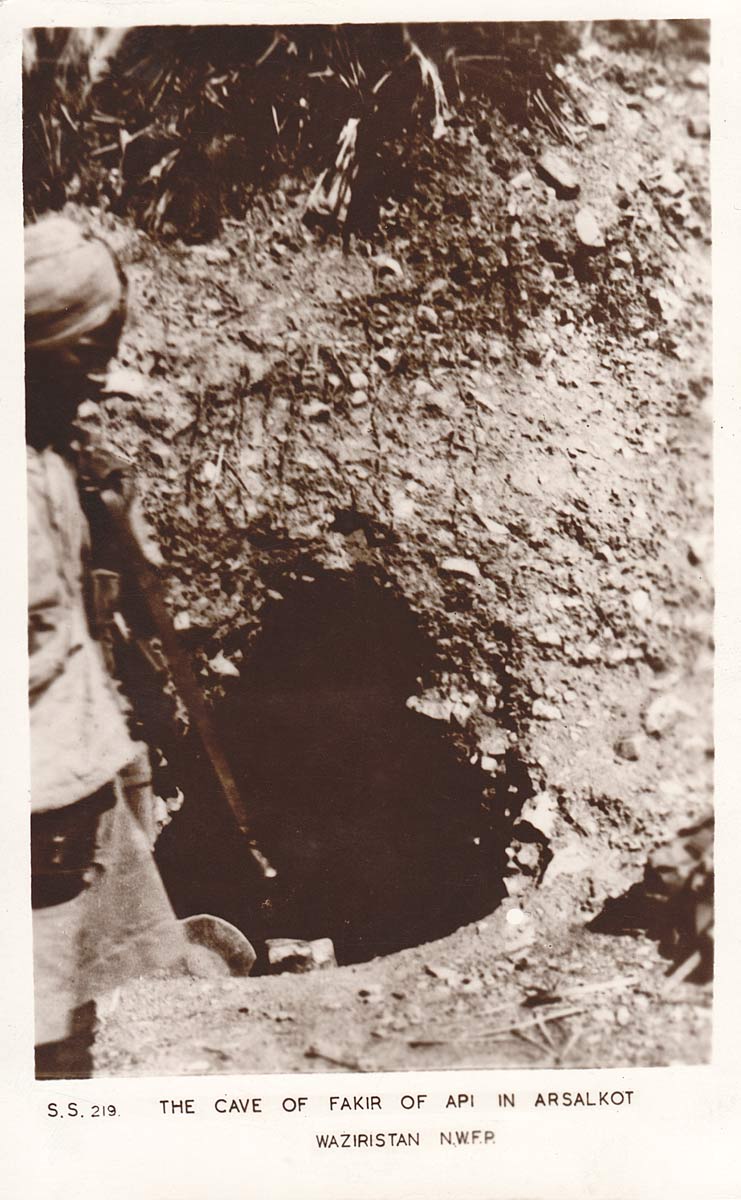Mirza Ali Khan (1901-1960) was a Waziri tribal leader who fought a number of campaigns against the British in the 1930s and 1940s, and later against Pakistan as well in support of an independent Pashtunistan. The British considered him a major threat and tried to track him down and defeat him a number of times but he always managed to escape with his life. In this case, his hiding place was located during a raid and memorialized in a postcard. Alan Warren in his book Waziristan The Faqir of Ipi and the Indian Army The Northwest Frontier Revolt of 1936-37 (Oxford, 2000) writes:
"Mirza Ali Khan moved to Ipi, in the Tochi valley, in the mid-1920s to further his religious studies, and after a haj to Makkah he returned to settle at Ipi. Over time, Mirza Ali Khan became an influential religious figure among the neighbouring Daurs, visiting other holy men, and acquiring a reputation for demanding little shukrana (a religious donation) or none at all. Strangely, government reports on Waziristan prior to 1936 do not identify the Faqir of Ipi, as he was now called, among the leading religious men of the agencies. (Pathans usually called the Faqir the Haji Sahib.) But according to the Intelligence Bureau's files, the Faqir had been one of the most important North Waziristan mullahs with the lashkar that travelled to Afghan Khost in 1933 to join a revolt against the Afghan King, an adventure that had helped establish his credentials as a belligerent leader. But for all that the intelligence reports reveal of the Faqir, he remains to this day a somewhat shadowy figure. There is no authenticated photograph of him in the British and Indian archives. He was said to be of medium stature, with a small moustache, thin beard, and was prone to asthma. But there are conflicting portraits; and the truth has been overlaid by a thick layer of legend and myth."

